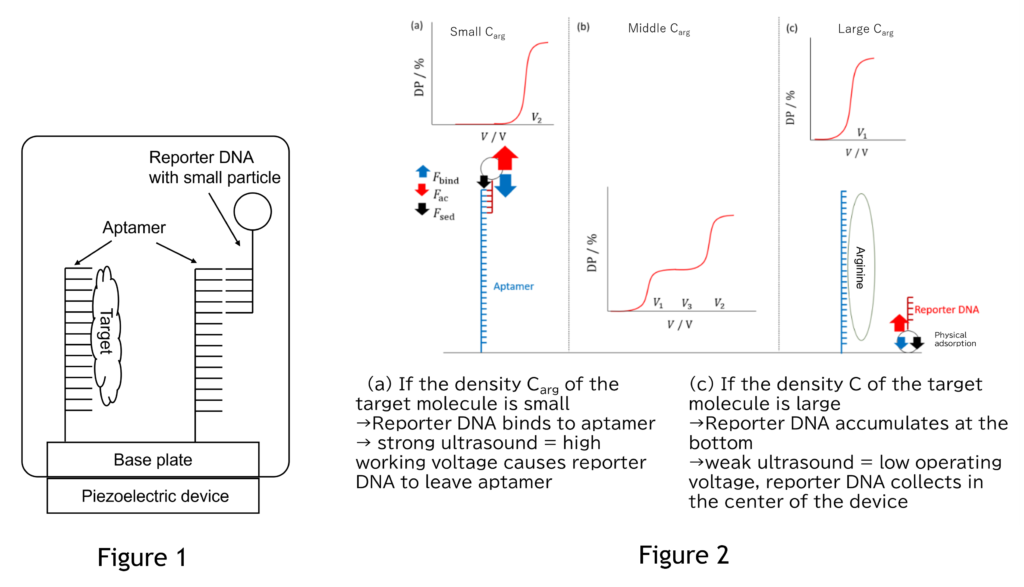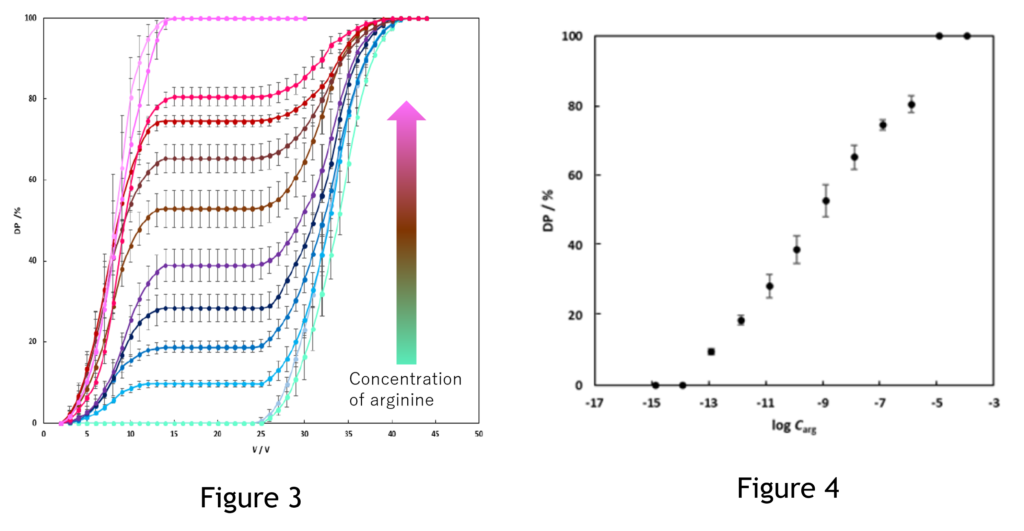Summary
- New trace substance measurement technology based on aptamer technology and ultrasonic levitation
- Capable of ultra-sensitive measurement. Capable of measuring trace amounts as small as sub-pM.
- High versatility. Can measure any molecule that can make aptamers
- Detector manufacturers interested in trace molecule measurement technology and companies related to the medical field, environmental analysis, criminal investigation, etc. that wish to use this measurement technology
Technology Overview & Background
In recent years, highly sensitive detection technologies for extremely small amounts of molecules ranging from sub-nano to femtomolar are required in the fields of medicine, environmental science, and food safety. Conventional detection techniques include ELISA and quantum dots. However, the business and research side is seeking higher detection sensitivity, better ease of use (no labeling or modification required, easy), and wider versatility.
Dr. Miyagawa, affiliated with Hiroshima University, has developed a completely new concept of microdetection technology that could solve these needs. This technology uses the force generated by ultrasonic waves to sense the concentration of extremely small amounts of substances with high sensitivity. It applies the phenomenon of “ultrasonic levitation,” in which powerful ultrasonic waves are used to levitate substances in air or liquid.
The mechanism of this technique is outlined below. The analyzer has a target molecule floating in the solution that fills it, an aptamer (fixed to the bottom of the analyzer) that binds specifically to the target molecule, and reporter DNA that binds to the aptamer (Figure 1). When the concentration of the target molecule is high, most of the aptamers bind to the target molecule, so the reporter DNA does not bind to the aptamers and accumulates at the bottom of the analyzer (Figure 2, right). In this case, when ultrasound is irradiated vertically, the reporter DNA is levitated from the bottom by ultrasound and eventually collects in the center of the analyzer (the ultrasound is adjusted in advance to create standing waves in the analyzer and to make a node in the center). On the other hand, when the concentration of the target molecule is low (Figure 2, left), many reporter DNAs are bound to aptamers, and the amount of DNAs that accumulate at the bottom is small. In other words, with weak ultrasound, the amount of reporter DNA that collects in the center of the instrument is small. However, if the ultrasound is somewhat stronger, the reporter DNA can leave the aptamer, and the amount that collects at the center of the analyzer increases. To summarize the above phenomena, the concentration of the target molecule can be measured by looking at the relationship between the amount of reporter DNA that collects at the center of the analyzer and the ultrasound given to the analyzer (the center of Fig. 2). In practice, as shown in the graph in the center of Figure 2, a calibration curve (Figures 3 and 4) must be prepared in advance from the voltage to generate ultrasound (horizontal axis) and the ratio of reporter DNA gathered in the center of the measuring instrument (vertical axis; the number of particles carrying reporter DNA is measured by microscopic observation and image analysis).
 |
Data
- As a model case, minute concentrations of arginine were measured. An experimental system was constructed using an arginine-specific aptamer and reporter DNA (loaded on polystyrene particles) that binds to it. The relationship between the ultrasound generation voltage and the deviation rate of the polystyrene particles was measured while varying the concentration of arginine, as shown in Figure 3. A calibration curve (Figure 4) was also created by plotting the relationship between known concentrations of arginine and the plateau area in Figure 3 (the area where the rate of divergence does not change with respect to voltage). From this calibration curve, the detection limit was 0.28 pM.
 |
Patent
Patent pending (not yet published)
Principal Investigator & Academic Institution
Akihisa Miyagawa Associated Prf.(Hiroshima University)
Expectations
We are looking for detector manufacturers who are interested in commercializing measurement devices using this technology. We are interested in collaborating with developers to develop products and licensing patents for commercialization. We are also looking for companies in the pharmaceutical, medical, environmental analysis, criminal investigation, and other fields that are interested in testing using this technology. We are looking forward to meeting with you to discuss your needs related to the detection of extremely small quantities.
We can arrange a meeting with a researcher in person.
In addition, we can disclose unpublished data and other information by concluding a nondisclosure agreement with the University of Tsukuba, and we can also discuss joint research on this topic.
Project ID:DA-05010


